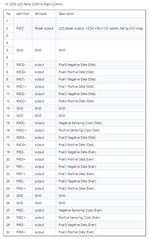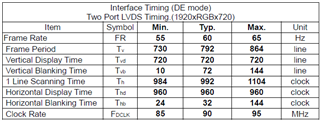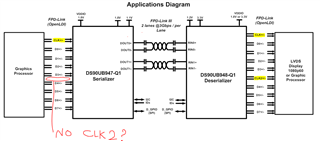Other Parts Discussed in Thread: DS90UB948-Q1EVM, USB2ANY
Tool/software:
Good afternoon all,
We are working on a prototype automotive infotainment screen for which i would like to convert the parallel short cable from what i believe is 2 Channel 8 Bit with 4 ODD pairs plus ODD clock and 4 EVEN pairs plus EVEN clock.
I have added the pinout for the display below to confirm.
With this in mind is the DS90UB947-Q1EVM and DS90UB948-Q1EVM a suitable evaluation system for achieving this conversion to a single land FPD-LINK III as i would like to use the spare twisted pair in the cable to provide power to the remote screen.
I see on the Evaluation boards there is a microcontroller, is that used for configuring the 947/948 once or is that required for each initialization/power up? This question relates to shrinking the EVM down to a smaller minimal size for placement behind our chosen screens.
Many thanks
Rich




